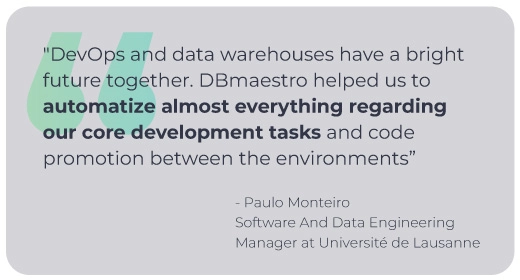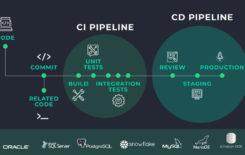Managing database changes effectively is crucial for maintaining data integrity, enhancing collaboration, and ensuring smooth deployments. Database source control has emerged as a vital practice for organizations seeking to streamline their database management processes and align them with modern DevOps principles. This comprehensive guide explores the concept of database source control, its benefits, best practices, and why it matters for businesses in 2024 and beyond.
What You’ll Learn:
- The fundamentals of database source control
- Key benefits of implementing source control for databases
- How database source control enhances team collaboration
- Best practices for effective implementation
- The importance of source control for data security and compliance
Understanding Database Source Control
Database source control is the practice of tracking, managing, and versioning changes to database schemas, stored procedures, and other database objects using version control systems. While traditional source control focuses on application code, database source control extends these principles to database structures and content.
At its core, database source control involves:
- Versioning database schemas
- Tracking changes to stored procedures, functions, and views
- Managing database scripts and migration files
- Coordinating changes across different environments (development, testing, production)
Unlike application code, databases present unique challenges for version control due to their stateful nature and the potential impact of changes on existing data. Database source control tools and practices address these challenges by providing specialized workflows and integration with database management systems.

Benefits of Implementing Database Source Control
Implementing database source control offers numerous advantages for development teams and organizations:
- Version History: Maintain a complete history of database changes, allowing teams to track modifications, identify issues, and roll back to previous versions if needed.
- Improved Collaboration: Enable multiple developers to work on the same database project simultaneously without conflicts.
- Consistency Across Environments: Ensure that database schemas and objects are consistent across development, testing, and production environments.
- Automated Deployments: Facilitate automated database deployments as part of continuous integration and delivery (CI/CD) pipelines.
- Risk Mitigation: Reduce the risk of data loss or corruption by providing a safety net for database changes.
- Auditability: Maintain a clear audit trail of who made what changes and when, supporting compliance requirements.
- Faster Development Cycles: Streamline the development process by reducing manual tasks and enabling faster iterations.
How Database Source Control Streamlines Collaboration
Effective collaboration is essential for modern development teams, and database source control plays a crucial role in facilitating seamless teamwork:
- Centralized Repository: Provide a single source of truth for database schemas and objects, ensuring all team members work with the latest versions.
- Branching and Merging: Allow developers to work on separate branches for different features or fixes, merging changes back into the main branch when ready.
- Code Reviews: Enable peer reviews of database changes before they are merged, improving code quality and knowledge sharing.
- Conflict Resolution: Identify and resolve conflicts between different developers’ changes early in the development process.
- Integration with Development Tools: Seamlessly integrate database changes with application code changes, ensuring consistency between the two.
By implementing database source control, teams can work more efficiently, reduce errors, and maintain a clear history of database evolution throughout the project lifecycle.
Database Source Control Best Practices
To maximize the benefits of database source control, consider the following best practices:
- Use a Dedicated Version Control System: Implement a robust version control system specifically designed for database objects.
- Implement Branching Strategies: Adopt a branching strategy that aligns with your development workflow, such as feature branching or GitFlow.
- Automate Database Deployments: Integrate database changes into your CI/CD pipeline for automated testing and deployment.
- Maintain Script-Based Migrations: Use script-based migrations to manage database schema changes, ensuring repeatability and version control.
- Implement Code Reviews: Establish a code review process for database changes to catch potential issues early and share knowledge.
- Use Database Comparison Tools: Regularly compare database schemas across environments to detect and resolve discrepancies.
- Document Changes: Maintain clear documentation for database changes, including the purpose and impact of each modification.
- Test Database Changes: Implement automated testing for database changes to ensure they don’t break existing functionality or impact performance.
- Monitor and Audit: Regularly monitor and audit database changes to ensure compliance with organizational policies and industry regulations.
Why Database Source Control Matters for Data Security and Compliance
In an era of increasing data breaches and stringent regulations, database source control plays a critical role in maintaining data security and ensuring compliance:
- Access Control: Implement fine-grained access controls to database objects, ensuring only authorized personnel can make changes.
- Audit Trail: Maintain a detailed audit trail of all database modifications, supporting compliance requirements and forensic investigations.
- Data Protection: Prevent unauthorized or accidental changes to sensitive data by enforcing change management processes.
- Compliance Support: Meet regulatory requirements by demonstrating control over database changes and providing evidence of change management practices.
- Disaster Recovery: Facilitate faster recovery from data breaches or system failures by maintaining version-controlled backups of database structures and content.
- Separation of Duties: Enforce separation of duties between development, testing, and production environments to reduce the risk of unauthorized access.
By implementing robust database source control practices, organizations can significantly enhance their data security posture and demonstrate compliance with industry regulations.
How DBmaestro’s Source Control Can Help
DBmaestro’s Database Source Control solution offers a comprehensive approach to managing database changes effectively:
- Seamless Integration: DBmaestro integrates with various sources of database changes across all environments, simplifying the management process.
- Collaboration Enhancement: The platform makes it easier for developers, DevOps teams, and DBAs to work together, accelerating release speed.
- Automated Script Generation: DBmaestro automatically generates and tests database change scripts, reducing manual errors and improving efficiency.
- Conflict Identification: The system helps identify conflicts and merge different development branches while providing a full view of all committed changes.
- Change Tracking: DBmaestro offers full visibility into who made changes, what changes were made, where, and why, enhancing accountability and traceability.
- Policy Enforcement: The platform helps enforce change procedures and reduce application downtime caused by database-related errors.
By leveraging DBmaestro’s Database Source Control, organizations can streamline their database management processes, improve collaboration, and ensure consistent, high-quality database deployments.
Conclusion
As organizations continue to prioritize digital transformation and agile development practices, implementing effective database source control becomes increasingly critical. Database source control offers numerous benefits, including improved collaboration, enhanced security, and streamlined development processes. By adopting best practices and leveraging specialized tools like DBmaestro’s Database Source Control, teams can significantly enhance their database management capabilities, reduce risks, and accelerate their development cycles.
In 2024 and beyond, database source control will remain a cornerstone of efficient and secure database management. Organizations that embrace these practices and tools will be better positioned to meet the challenges of rapid development, maintain data integrity, and ensure compliance with evolving regulations. As the complexity of database environments continues to grow, the importance of robust source control practices will only increase, making it an essential investment for forward-thinking organizations.







